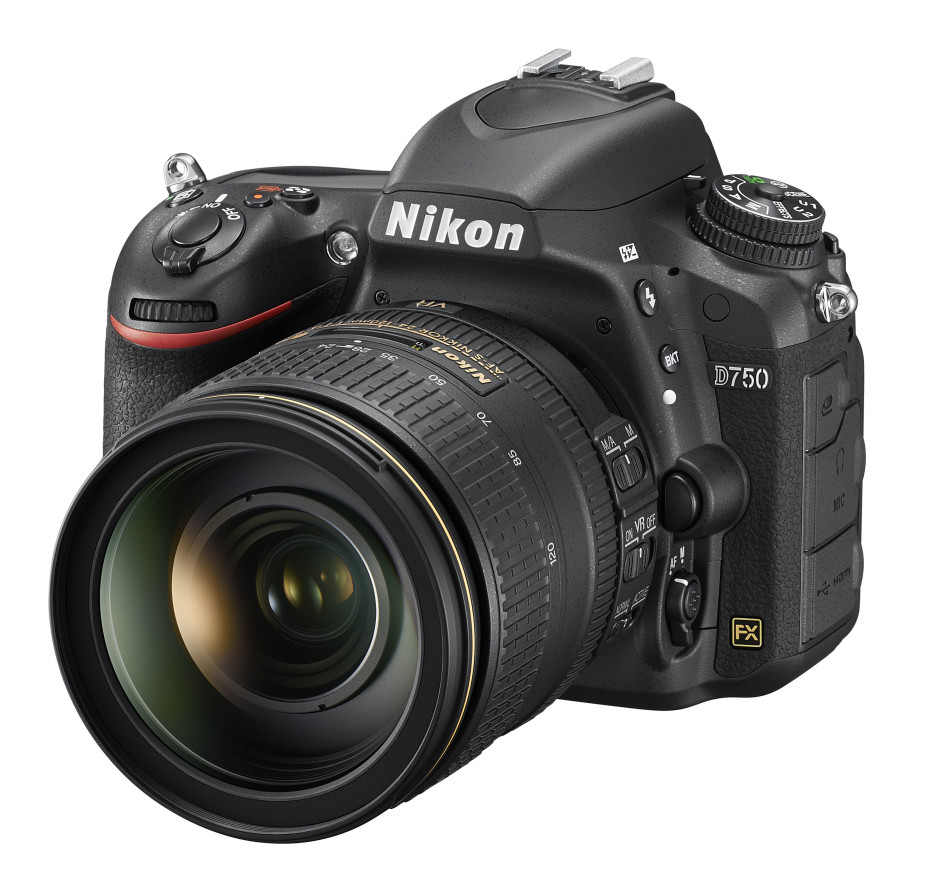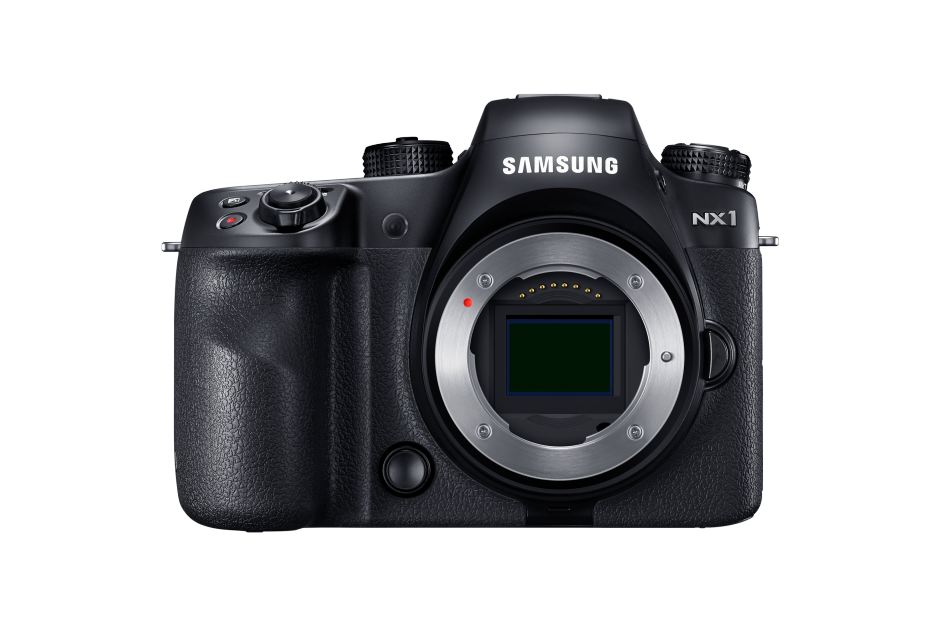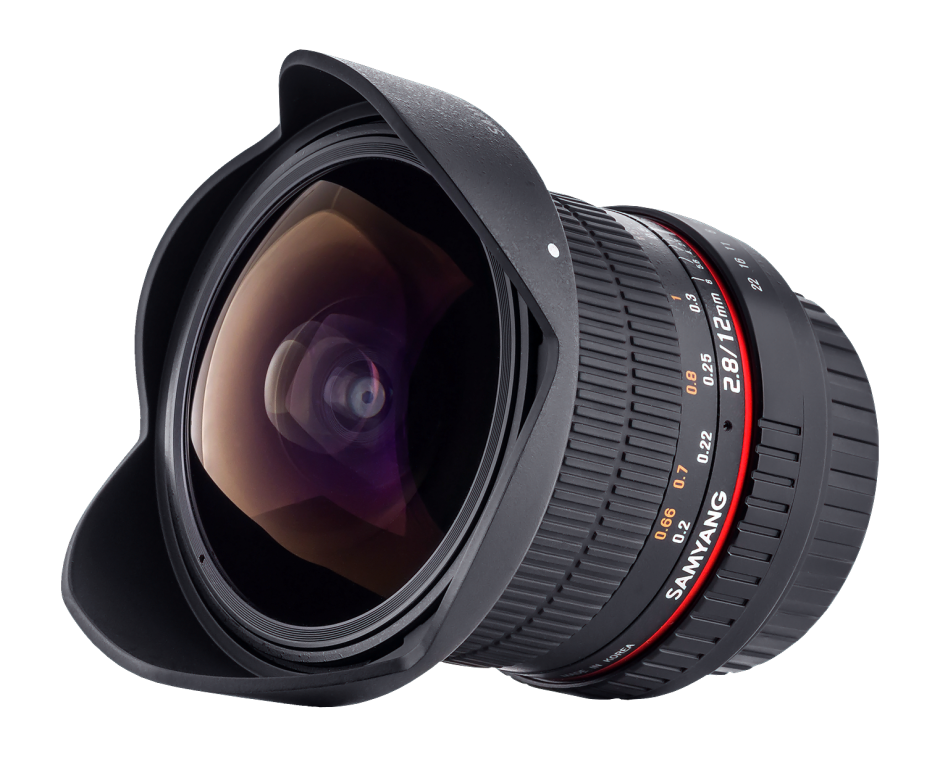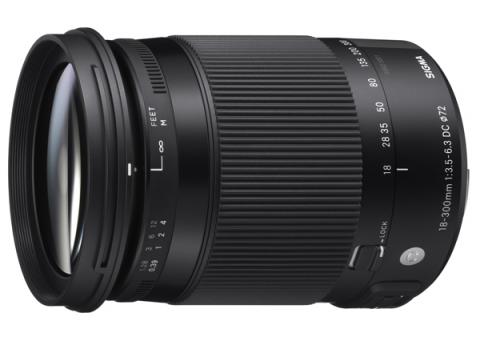The Consumer Electronics Show in Las Vegas is one of the biggest platforms in the world for announcing new photography kit. So what went down in 2015?
The great Photokina 2014 round-up
Keeping track of everything new that's announced at Photokina can feel like something of a labour of Sisyphus. So rather than cover every new product with an individual article and drive everyone to distraction, we've opted to summarise as many as we can in one place. This is Photokina 2014. Enjoy!
Canon
After what amounts to years of speculation, Canon has finally announced the EOS 7D mark II. The basic spec: APS-C, 20 megapixel sensor; ISO 100 to 16,000 but expandable to 51,200; dual DIGIC 6 processors; 65-point auto-focus; top shooting speed of 10 frames-per-second; and built-in GPS. All for $1,800, body-only.
Three new lenses have joined the line-up, too: an EF-S 24mm ƒ/2.8 STM for $149.00; an EF 24-105mm ƒ/4.0L IS STM for $599; and the EF 400mm ƒ/4.0L DO-IS II (USM) at $6,899.
There are also three new compact cameras. The premium G7X with its 1", 20 megapixel sensor and DIGIC 6 processor; top sensitivity of ISO 12,800; and a 24 to 100mm lens with a maximum aperture of ƒ/1.8 at its widest and ƒ/2.8 at the telephoto end, for $700. The SX60 superzoom with its 65× optical zoom for $550. And the N2, which, like the Powershot N, leaves me baffled.
Fujifilm
Fujifilm announced an update to its much-loved X100-series; the X100T. This one comes with an improved hybrid viewfinder, enhanced controls, and faster shuttre speeds. All for $1,300, in either black or silver.
The X20 has been upgraded to the X30. The improvements to Fuji's point-and-shoot focus on a new viewfinder and a tilting 3" high-res LCD. You can order one for £600.
There were also two new lenses: the X-F 56mm ƒ/1.2 R APD (85mm quivalent in 35mm format) for $1,500. (APD is apodisation. It is designed to give even smoother bokeh than the normal XF56. Great for portrait work.) And the weather resistant 50-140mm ƒ/2.8 R LM OIS WR at £1,600.
And don't forget the graphite-look X-T1 for $1,500 body-only.
Joby
Roll-up, roll-up, get your suction cups from Joby! Adding to its range of twisty, bendy, go-anywhere camera support devices, Joby has unveiled two suction cups, designed to provide industrial-strength hold on all types of smooth, clean, and non-porous surfaces. One has a locking arm, that's best for use in vibration-prone situations, such as in cars or on board boats (£33). The other has a Gorilla-pod arm, a quick-twist, flexible option that's better for windows, walls, and inside cars (£25).
[gallery columns="2" ids="6976,6975"]
There's also the Pro Sling Strap, designed for dSLRs, to keep your camera close to your body but easy to pull up to your eye (£57); the GorillaPod Focus + Ballhead X is the strongest and largest GorillaPod to date (£140); and the Flash Clamp and Locking Arm, which helps to transform everyday objects into lighting assistants with the two articulating ball joints that let you position your flash at any angle (£35).
[gallery ids="6979,6978,6977"]
Leica
Leica announced a laundry list of new cameras at Photokina:
- Leica M 60 Edition - an LCD-less camera, limited to 600 units, and costing $18,500 with a 35 Summilux stainless steel lens
- M-A
- X - Type 113; and X-E
- S - Type 007; and S-E
- V-Lux - Type 114
- D-Lux - Type 109, basically a Panasonic LX100
And a goodly selection of lenses, too. Leica enthusiasts couldn't have known which way to look first!
Nikon
Nikon's big announcement was the D750: an FX-format camera with 24 megapixel sensor and EXPEED 4 processor, 51-point autofocus system, sensitivity ranging from ISO 100 to 12,800, a tilting LCD, built-in wi-fi, all crammed into a smaller-than-expected body. For $2,300, body-only.
There was also the new Nikkor AF-S 20mm ƒ/1.8G ED and the SB-500 Speedlight.
Olympus
[gallery ids="6969,6968,6967"]
As well as announcing the E-PL7, Olympus brought out its E-M1 in silver (body-only for $1,400) and a new 40-150mm ƒ/2.8 lens for $1,500.
Panasonic
Panasonic came up with two new cameras and a new lens, together with the re-branded Leica cameras under the V-Lux and D-Lux badges.
[gallery ids="6966,6965,6964"]
The new LX100 camera is available for $900. It has a Micro Four Thirds sensor, a 4-75mm Leica DC lens (ƒ/1.7-2.8), and comes with an external flash. The GM5 mirror-less camera comes in black or red, with a 12-32mm lens, for $900.
And there's also the Panasonic G Vario 35-100mm ƒ/4.0-5.6 ASPH lens for G-series cameras, costing about $400.
Samsung
Samsung let loose a new camera, lens, grip, battery, and charger on the public in Köln. The camera is the 4K-video-enabled 28 megapixel NX1 for $1,500 body-only and the lens the 50-150mm S.
Samyang
As well as the 50 mm T1.5 AS UMC cine lens, Samyang also announced its 12 mm ƒ/2.8 ED AS NCS fish-eye lens, which has been designed for full-frame cameras. We don't have a price or release date yet for it, but I am looking forward to seeing it.
Sigma
Sigma announced its dp1 Quattro camera, with a Foveon direct image sensor that is similar to traditional colour film in that its multiple layers capture all of the information that visible light transmits. It also announced two different versions of the same lens: the 150-600mm F/5-6.3 DG OS HSM Sports and the 150-600mm F/5-6.3 DG OS HSM Contemporary. The sports version is, probably quite obviously aimed at sports and wildlife photographers. The contemporary label is more compact and portable.
There was also the 18-300mm F/3.5-6.3 DC Macro OS HSM Contemporary lens.
Sony
Just before Photokina, Sony announced two new lens units, to attach to smartphones. These were the QX1 and QX30. During Photokina, a slew of camcorders, video cameras, and accessories were unveiled, too. The things that caught my eye was the flash unit, the HVL-F32M for $300.
A flare issue in the Fujifilm X-T1
If your new Fujifilm X-T1 carries a serial number lower than 41M07801, you are being advised to contact Fujifilm's customer service team (0844 553 2322 in the UK). This is to arrange for your camera to be inspected and, if necessary, adjusted to remedy a flare issue that some units from early in the production run are experiencing.

A manufacturing fault means that if the connector port cover happens to be open while images are being shot and strong sunlight is shining into the port at a certain angle, the light can be reflected within the camera body and be recorded on the images. These aberrant rays of light render as a flare effect for those photographers who've seen it. As the connector cover is usually closed and the light has to be at a particular angle, it's a relatively rare occurrence. Still, best to have it checked and, if necessary, repaired.
Fujifilm will carry out this service free of charge.
Hands-on with the Fujifilm X-T1
In one of life's odd little turns, I found myself pitching up at the Fujifilm X-T1 press conference in Bangkok this lunchtime. Yes, today was meant to be a rest day between excursions, but I couldn't resist the invitation to join Daniel, the editor of ThemePhoto, just around the corner from where I'm staying. There were a few X-T1 bodies with different lenses floating around, plenty of tea and coffee, and I had the opportunity to play around with Fujifilm's newest addition: weather-sealed, dSLR-look-alike, and 16 megapixel APS-C sensored. After all that pre-amble, what did I think? Mostly, that I enjoyed getting to know it, albeit briefly, and I would appreciate being able to spend more time with it. Without a dedicated mode dial you alter the sensitivity and shutter speed dials independently, selecting 'A' on each if you want it in automatic, and switch between automatic and manual on the aperture ring to control your exposure. If you want to shoot aperture priority but manually control the ISO, you set the shutter speed dial to 'A' and the adjust the other two as required.

There's an exposure compensation dial on top of the camera, beside the shutter speed dial, and a front-facing dial that gives you more refined control over your shutter speed. Without the standard mode dial giving you 'Sport' and 'Portrait' options, it makes you think that this is a photographer's camera. Yes, there are soft-focus and toy camera options, but they're hidden away and not obvious.
However, I did find it quite tricky to adjust the shutter speed dial while holding the camera to my eye. Unless this is something that I could get used to (I'm not sure) it could get trying very quickly. I found the rings to switch between metering modes (beneath the shutter speed dial) and drive modes (beneath the ISO dial) a little awkward to adjust, too. Your milage may vary.
The four-way controller gives you control over your most-used functions, for example white balance, macro mode, and Fujifilm's film replication effects. You can make it into the camera that you want it to be.
Did I notice any lag with the EVF? Well, yes. But, it is possible to select whether you shoot EVF-only, EVF+LCD screen, or LCD-only. I thought it felt faster and less laggy in EVF-only mode. You know what I did like, though? That when you shift orientation from landscape to portrait, the information that appears on the EVF re-orients itself, too.
I tried out the 18-55mm kit lens, which handled very well, the gorgeous XF56mm ƒ/1.2, and the 55-200mm telephoto lens. I found that last one had a fairly stiff, not very smooth zoom ring, but some people might prefer that. At launch, there's no weather-sealed lens to go with the weather-sealed camera, which is a shame, but the X-mount range is growing and the weather-resistant 18-135mm is scheduled to arrive in summer this year, to be followed by two more later in 2014.
When I had the opportunity to chat with Somkiat Narattanakulkitti, Fujifilm's General Manager of Marketing and Sales in Thailand, apart from him asking me if I weren't put off by the protests, he was keen to point out how Fujifilm thinks it's important to innovate, and the X-T1 is a part of that. People want a camera that looks stylish, performs well, but isn't a cumbersome brute. Okay, so he didn't use the words 'cumbersome brute', but the X-T1 is about form and function and Fujifilm's direction is definitely to keep on keeping on. No, I couldn't get him to confirm if a full-frame camera is coming next, but it wouldn't surprise me.
At £1099 body-only, the X-T1 is a compelling piece of kit. I won't be trading in my current camera for it any time soon, but I can certainly see how some people would be tempted by it, and I wouldn't mind it for an extended stay!
Fujifilm teases its new X-mount camera
It's not a leak; it's a teaser. Fujifilm has posted an image of a new X-mount camera to its website and the line 'Coming on January 28th.' Here, you can see it for yourself:
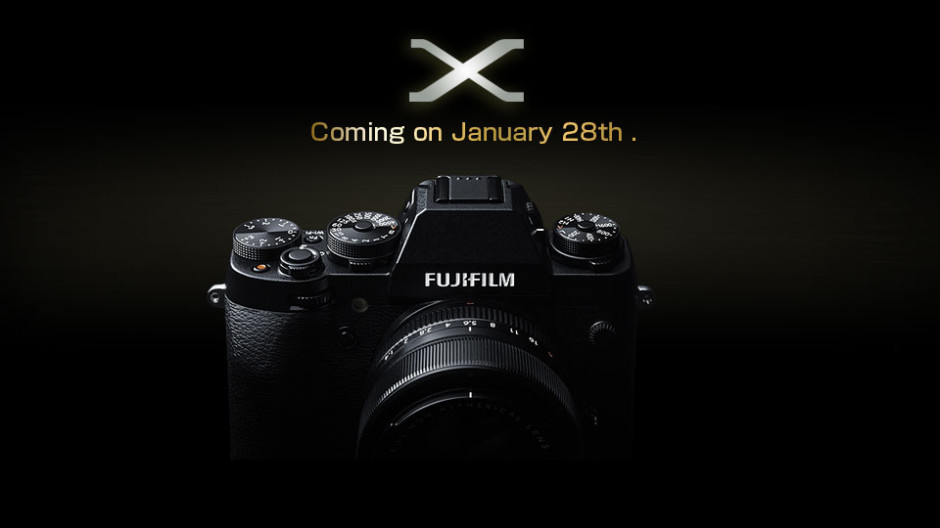
Apart from what we can see of the retro-esque design that Fuji's made its trademark (dials to control exposure compensation, shutter speed, and ISO), there are rumours that it will be weather-sealed, have a 16 megapixel APS-C sensor, and be called the X-T1. There're also a few murmurings about it taking on Nikon's retro-looking, video-free, full-frame beast, the Df. We'll wait to see; it's due out next Tuesday.
No more Fujifilm FP-3000B?
I woke up this morning to the plaintive cries of a small but dedicated group of photographers who are lamenting the loss of the next in Fujifilm's line-up of films that has hit the discontinuation wall. Apparently, Fujifilm is winding up production of its FP-3000B instant black and white film. This peel-apart film was renowned for being quick to develop and being highly sensitive to light with an EI of 3,200. With its axing, there will be no other 3×4 black and white instant films available. For anyone who shoots medium format and uses instant film as a quick proof, it's a loss. And of course it's a loss to the people who just enjoy taking photos with it.
If you're particularly concerned by the loss of 3000B, a petition has been established to request that Fujifilm reconsider the decision. There's also the #fuji3000b hashtag to keep interest levels up. But in the meantime you might do well to stock up on the remaining supplies.
As I've not seen any official correspondence on this, I have emailed Fujifilm UK to confirm. I await its response.
Update: Fujifilm US has issued confirmation via Twitter.
Fujifilm to cease UK E6 processing
Fujifilm has announced that from 1 November 2014, it will no longer provide E6 processing in the UK. The year-long notice period is to ensure that anyone with remaining rolls of Fujichrome Sensia process-paid film and pre-paid processing vouchers have sufficient time to use them. Gabriel Da Costa, product manager for Fujifilm, commented that the lab's closure had a degree of inevitability to it: '... increased production costs coupled with decreasing global demand led to the Fujifilm Corporation in Japan discontinuing Sensia film in 2010. As UK stocks of Sensia were run down the numbers of E6 films being processed has obviously declined too.'
Fujifilm ran its lab in partnership with CC Imaging, a Leeds-based pro lab. CC Imaging will continue to trade as normal and its customers will still be able to have their transparency films developed there, but not under the 'Fujifilm Processing Laboratory' brand after 1 November 2014.
Da Costa added: 'Particular recognition must go to Mark Senior and John Weldon, the owners of CC Imaging, and their team who have looked after the lab and its customers so well. We would also like to thank all the lab's customers for their support over the years. We are delighted that CC Imaging plan to continue and we wish them every success for the future.'
Queries regarding this announcement can be addressed to the Fujifilm Processing Lab by email: info@fujifilmprocessinglaboratory.co.uk, or visit the processing lab website, or call 0113 244 8221.
Fujifilm and Panasonic come together to create a thinner, more sensitive imaging chip
The development of the imaging chip has focused overwhelmingly on resolution, and the desire to cram more and more pixels onto smaller and smaller sensors. However, improvements to image quality can only come from so much increased resolution; the focus now needs to shift to improving dynamic range, sensitivity, and pixel accuracy. We've already seen the potential for a graphene sensor developed at the Nanyang Technological University, but camera manufacturers are also looking to improve sensor technology, too. To this end, Fujifilm and Panasonic have been collaborating on a thinner, more efficient sensor.
Between them, with Panasonic focused on boosting image quality with semi-conductor device technology and Fujifilm devoting its attentions to an organic photoelectric conversion layer (more on those in a moment), they have developed an organic CMOS sensor with higher dynamic range, increased sensitivity, and a wider incident angle. This should lead to better image quality from smaller sensors.
A conventional image sensor comprises a silicon photodiode to capture light, a metal interconnecting layer, a colour filter, and an on-chip micro-lens. Fujifilm has swapped the silicon photodiode for an organic photoelectric conversion layer. This is more sensitive than the silicon photodiode as well as significantly thinner.
Panasonic's contribution has been to increase the ability of sensors to handle electronic signals, preventing highlight clipping and reducing noise. It estimates that these new sensors have a dynamic range of 88dB.
Furthermore, between them Fujifilm and Panasonic have managed to increase the area of the sensor capable of harvesting light. They estimate this should boost sensitivity by 1.2 times compared to a conventional sensor, helping to capture images in lower light settings.
Finally, by swapping the silicon photodiode for the organic photoelectric conversion layer and reducing its thickness, there's been an increase in the angles from which the sensor can detect light. Instead of an incidence of 30 to 40°, you're now looking at about 60°. You can see this illustrated in Figure 1. This should allow for for more faithful colour reproduction and possibly more flexibility when it comes to lens design.
If you're at the 2013 International Image Sensor Workshop to be held in Utah on 15 June, you'll be able to hear more about the technology. However, they are anticipating it will be used across the spectrum of imaging products, so I suspect we'll be hearing more in the future.
TIPA 2013 - who won what
 Once a year the Technical Press Imaging Association, or TIPA, meets in a desirable location—this year it was Hong Kong, last year in was Cape Town—to settle on which manufacturers have produced the best easy-to-use compact cameras, most innovative tripods, and the swishest top-end dSLRs over the past 12 months.
Once a year the Technical Press Imaging Association, or TIPA, meets in a desirable location—this year it was Hong Kong, last year in was Cape Town—to settle on which manufacturers have produced the best easy-to-use compact cameras, most innovative tripods, and the swishest top-end dSLRs over the past 12 months.
There are in fact 40 different categories that are decided on by representatives from TIPA's 27 member magazines, as well as the Camera Journal Press Club of Japan.
Canon took most of the dSLR spoils, winning best entry-level with the 100D, best expert with the 6D, and best video dSLR with the 1D C; Nikon, however, won the advanced category with its D7100.
When it came to compact system cameras, or mirror-less cameras, or EVIL cameras, Fujifilm, Olympus, Panasonic, and Samsung all had a look-in. Fujifilm's X-E1 won the best expert CSC award; Olympus took the entry level CSC honours with the PEN E-PL5; the professional CSC prize went to Panasonic for its GH3; and finally the advanced prize was won by the Samsung Smart Camera NX300. If you can wade your through the difference between 'professional', 'advanced' and 'expert', then you're a better woman than I am.
The compact camera categories were split between Nikon and Panasonic. Nikon walked off with awards for its Coolpix S01 in the 'easy' class and its P520 superzoom. The rugged camera was Panasonic's prize, though, for the FT5 (or TS5, depending on where you are).
Canon, Fujinon, Nikon, Sigma, and Sony all won prizes for their lenses, ranging from 'best CSC prime' (the Fujinon XF 14mm ƒ/2.8 R) to 'best professional lens' (Canon's EF 24-70mm ƒ/2.8L II USM), via best entry-level dSLR lens (the Sigma 17-70mm ƒ/2.8-4 DC MACRO OS HSM).
As for best premium camera, that was the Sony RX1; best professional camera was the Leica M; and best imaging innovation was awarded to Samsung for its 45mm ƒ/1.8 (2D/3D) lens.
If you want to check out the rest of the winners, which includes best media storage, imaging monitor, and photo TV, you can see the whole list on TIPA's website.
I can't help but feel that with a carousel of categories where the differences in criteria aren't necessarily discernible, it's more a case of 'These were all really good products and we need to find some way of showing that.' I can't say that the awards will encourage me to buy a Nikon superzoom, but it must be gratifying for the manufacturers to receive a pat on the back.
The ugly truth behind our beautiful cameras

I seem to be doing okay with my current camera. Do I really need a new one?
Rampant consumerism; it's well, rampant. Apple releases a new iPhone every year; in January, Fujifilm announced 27 new compact cameras (yes, 27, go check it out if you like, I'll be waiting when you get back); we've lost track of the numbers in the Lumix G-series; and if Canon doesn't come up with a 70D in time for Photokina, I'll be a bit surprised. (I could be wrong, though, so don't lay money on it on my account.) New products are the bread-and-butter of my writing on Pixiq, and don't for one moment get me wrong; I'm fascinated by the advances that we've made in camera technology and I cannot wait to see where we get next. However, an email that I received today, alerting me to Canon's announcement of its corporate social responsibility plan, got me thinking.
Every camera that rolls off of the production line has a huge impact on the environment, and in fact on communities far from where it was made or where it will eventually end up. They comprise thousands of parts made from hundreds of different materials. But have you ever considered where they come from, how they're made, and what happens to them when we decide that they're obsolete - something that happens far too quickly? You've probably heard of conflict minerals, but do you know how many are in your camera? Any idea what a rare earth element is? Do you know anything about the major manufacturers' dedication, or lack of it, to their corporate social responsibilities?
Put it this way, it is admirable that Canon has published a document that holds it to some kind of standard, but I don't think it went far enough. There's more to being environmentally aware than agreeing to reduce your carbon dioxide emissions, as necessary as that is; and social responsibility goes a heck of a lot further than being able to further the artisitic endeavours of the people who buy their products.
For the record, none of this is about wanting to hold back development or somehow artificially suppress the advance of technology. My phone today can do things that I could scarcely dream of when I picked up my first one 16 years ago, and that's truly marvellous; I sit awestruck at the advances I've seen in camera technology since I switched from analogue to digital. But somehow, we need to make our hunger for gadgets and the relentless cycle of new products sustainable, because right now, it isn't. This is more than just a mentality of buying something new rather than repairing it, and whilst it encompasses the desire to always be in possession of the most up-to-date gadgets available, it goes deeper than that. This one really is about life and death, and not just death from embarrassment because you still use an iPhone 3G.
If you've never thought about what goes into your camera and where it comes from, sit down, take a deep breath, and read on. It might not be pretty, but I hope it's thought provoking.
Rare earth elements
First of all, we should clear up the misnomer around 'rare earth', because this group of 17 metallic elements aren't that rare at all. Cerium's more common than copper. It's just a name that they happened to end up with after the discovery of yttrium in 1787 by a Swedish military officer. They're lightweight, unusually strong, and magnetic, qualities that make indispensable in electronic gadgetry.
It's not just europium and terbium that are used in the screens on our cameras, the samarium-cobalt magnets that control our shutters, or the bundle of others that are melted into circuit boards, though. Lanthanum oxide is used in lens production to help prevent distortion, too. In minuscule quantities, our cameras are riddled with rare earth elements.
So what's the problem with the rare earths? Whilst they might not be rare in general, they are rare in large concentrations. When they are found in concentration, it is usually in proximity to radioactive elements uranium and thorium, making them dangerous and expensive to mine.
At the end of 2011, roughly 50% of the world's rare earth concentrations were in China, and China produces nigh-on 97% of the world's supply of rare earth elements. Not only do you have a single country responsible for the overwhelming production of a group of elements vital to just about any electronic gadget in current production, but this country also has a terrible record of human rights abuses. Mining; radioactive materials; near-monopoly; you join the dots.
Now add to this the prediction that China's own demand for rare earths will outstrip its potential supply within the next five years and you can see that there's a bit of a problem. As far as the UN is concerned we have to start recycling our rare earth elements more.
Conflict minerals
There's no misnomer to clear up here, conflict minerals are just that: minerals mined under conditions of conflict. Primarily this concerns mines in the eastern provinces of the Democratic Republic of the Congo, some of them under the control of the Congolese National Army, others rebel militias. It's isn't just that the profits from the mines are ploughed back into a continued and bloody war that's destroying a country and that there are the inevitable battles over the mines themselves, but that the mines exploit the local population mercilessly. Think forced labour, coercion, extortion, violence, and rape.
Coltan, or columbite-tantalite, is the ore from which tantalum is extracted. You'll find tantalum used in the manufacture of capacitors, whilst tantalum oxide is used to produce high refractive index glass. That, of course, is used in lenses.
Circuit boards are put together with solder, solder is made using tin, tin comes from cassiterite, and cassiterite is a conflict mineral.
Wolframite is a tungsten-bearing ore, with tungsten carbide being used in some electronic devices, but predominantly in drill bits and the milling process, because it's stupidly hard.
Finally, we get to the G of 3TG, as conflict minerals are sometimes known, gold. It's an excellent conductor, very ductile, has low toxicity, and is hard to corrode. You'll find it used in electrical contacts.
Thankfully, unlike rare earth elements, deposits of conflict minerals aren't limited to war-ravaged central Africa. There are extensive tantalum deposits in Australia, tin is found world-wide, tungsten has huge deposits in China, but can be mined elsewhere, and gold isn't exactly ubiquitous, but it's found in plenty more places than central Africa. The problem is how conflict minerals secrete their way into the market–you're dealing with warlords here, after all–and the inability, perhaps even the unwillingness, of buyers to attempt to trace the origins of their raw materials. It's a case of asking no questions and being told no lies. But that doesn't really help the DRC.
And everything else
Rare earth elements and potential conflict minerals comprise just a fraction of any camera or lens. There's also the plastics, the glass, the other metals, and the rubber, not forgetting the waste products like carbon dioxide. After they've been packaged and shipped, we charge them up with electricity and heaven knows how far we drive or fly to use them.
So what to do?
Without wanting to sound too much like the tree-huggy liberal that I am, it's something for which we all have to take responsibility: you, me, and the guys who run Olympus. As consumers, it's easy for us to say that we need manufacturers to do more–which, yes, they absolutely must do–but we need to take action ourselves. Manufacturers, if you happen to be listening, don't abrogate yourselves of responsibility by blaming consumers for their wanton desires and penny-pinching ways. You're people, too, and you live in this world.
I'm not nearly virtuous enough to say that I'm never going to buy another electronic device unless it comes with a certificate of guarantee that it's conflict mineral-free. At the moment, there just isn't a programme in place that can guarantee this. Besides, when you say something like that, you set yourself up for a monumental fall. I mean, I try never to eat Nestle products, but I'm sure that I must've slipped up at some point in the past 15 years or so. And I won't hold you guys to a higher standard than I can hold myself, either. I can, however, look out for producers that make more of an effort, and all of them can start asking more questions of their suppliers.
But the disused iPod, the broken down iBook, the drawer full of obsolete mobile phones dating back to 1996, and the heaven-knows how many cameras that I keep 'just in case' could all be recycled.
I've been contemplating a new dSLR for a while now, but do I really need one? How much of my desire for more megapixels, for faster frames per second, for increased sensitivity is driven by tech lust, and not because I actually need these things and my current model is, in fact, adequate? How much of this is going to have a discernible impact on my photography, as opposed to me reading more, shooting more, and evaluating better? For any photograph, the photographer is the critical factor and not the camera. Upgrading your kit won't make you a better photographer or make you take better images; that's down to your skill and talent not your camera's spec.
If and when the time comes for me to upgrade, what will I do with my old camera? There are better options than leaving it in my store in the studio. It's perfectly saleable on the secondhand market.
Wouldn't it be great if manufacturers gave more consideration to product cycling, and provided easy means to recycle their products, too? 'Here, Canon, I'd quite like to upgrade my S90 to an S100. Why don't you give me some money towards the new one, and strip the old one for parts?' Everyone wins there, me, Canon, and the kids in the eastern DRC.
We need to ask more questions, and not pretend that these are problems that don't exist; we need to be more discerning; and, yes, we all need to be a little less greedy: consumers for the latest bit of tech and corporations for the last penny of profit. It won't hurt, I promise.
I used heaps of sources in writing this, most influential amongst them:
Letting kids loose with the Sakar Disney AppClix camera? Not my first choice.

Mickey makes it cute and all; but it still doesn't endear me.
Occasionally I read the spec for a product and I'm left with an overwhelming urge to try get inside the head of the designer in order to figure out just what it was that she or he was thinking when embarking on its birthing process. Sometimes it'll be a case of 'Wow! That's so amazing what inspired you?' Others it'll be a much more cyncial 'What, exactly, were you thinking there?' When someone pointed me in the direction of the Sakar Disney AppClix camera, it was definitely a case of the latter.
It's a Disney-branded camera, it comes emblazoned with Mickey or Minnie Mouse, Tinkerbell, a princess, or Phineas & Ferb. It's clearly aimed at kiddies. And I'm so in favour of getting little ones interested in photography that I'll always take notice of something intended to do just that. But this one has it, well, wrong.
Oh for sure the specs on this make it a fairly desirable piece of kit, with seven megapixels of resolution, 4× zoom, a micro SD card slot, and the ability for it to function without having to connect it to a PC, but it has one major flaw. It's designed to be attached to an iPad. Whilst it is certainly convenient to have a camera on an iPad, the iPad is in no way a convenient device to function as a camera. And it certainly isn't one that I'd thrust into the hands of an eager seven year old.
Its size, its shape, its primary function... just... no.
At $60, it is reasonable, especially because it comes with its own internal rechargeable battery, and there's a free companion editing app, too. But you attach it to a piece of kit that starts at $499.
Nope. When you've a youngun who really wants to have a go at photography, get a decent point-and-shoot at under $100 (I'm a big fan of the Fujifilm Z90), with an even better lens and video capability, too, and let her or him loose with that. They'll have a proper camera to call their own and you won't be fretting about your iPad. Everyone wins.
(Headsup to Engadget)
What now for Olympus?
If you were Shuichi Takayama, President of Olympus, what would you do now?
Olympus has just escaped, by a whisker, being delisted from the Tokyo stock exchange. The financial reports that were submitted on 14 December to prevent this grizzly fate showed an ¥84 billion ($1.08 billion) reduction in net assets, and a loss of ¥32.3 billion ($414 million) over the past six months. And as a consequence, share prices have fallen by another 20%; let alone the descent that they took between the end of October and now - as a financial scandal of epic proportions unfolded before the world - which would have made Bode Miller proud.
On top of this, your board sacked the guy who uncovered all of these financial misdealings, basically because he had the audacity to do it. Of course, he's probably the person with the nous to get you out of this hole. Sorry, crater.
Olympus is running short on cash, your net assets are currently valued at ¥46 billion, and you need to do something, fast.
You've hinted at the possibility of a merger, either in the form of a capital tie-up or an operational or sales tie-up. This would help to bring the firm some much-needed cash, but at the cost of its independence. And who would you seek out for this tie-up? Hoya has just cut loose Pentax, so has the cash, but does it have the interest, and Fujifilm is on the up-and-up. But is this going to be best for Olympus?
Michael Woodford, the CEO whom you so unceremoniously sacked in October, has been quite open about his willingness to resume a role at Olympus, but it would be at your expense. He thinks it would be best to wipe the slate clean with a mass culling of the board, and the independent inquiry commissioned to find out just what was going on in your company suggested something similar. You of course would rather stay where you are, or at least ensure that who ever is in control next is of your choosing. Does this really help Olympus?
Woodford knows that Olympus needs to recapitalise, and swiftly, but he's against any kind of merger that would threaten its independence and he doesn't want to break up or sell the company to which he dedicated 30 years of his career. Instead, he'd seek out private equity or even consider a rights issue, when existing shareholders are issued warrants to buy new stock. Would he manage it? Who knows. Who knows if the rot hasn't set in too badly and Olympus isn't beyond redemption. But maybe he has the best chance.
If you want to rescue the company that we all suspect you love, Mr Takayama, from an ignominious fate, it might be optimal if you and the rest of the board fell on your swords. It might appear a drastic action, but the situation is dire. Piecemeal offerings, the continued taint of scandal, and puerile attempts to ensure some degree of control of the company even after you've gone won't help. Go now, and go with grace.










